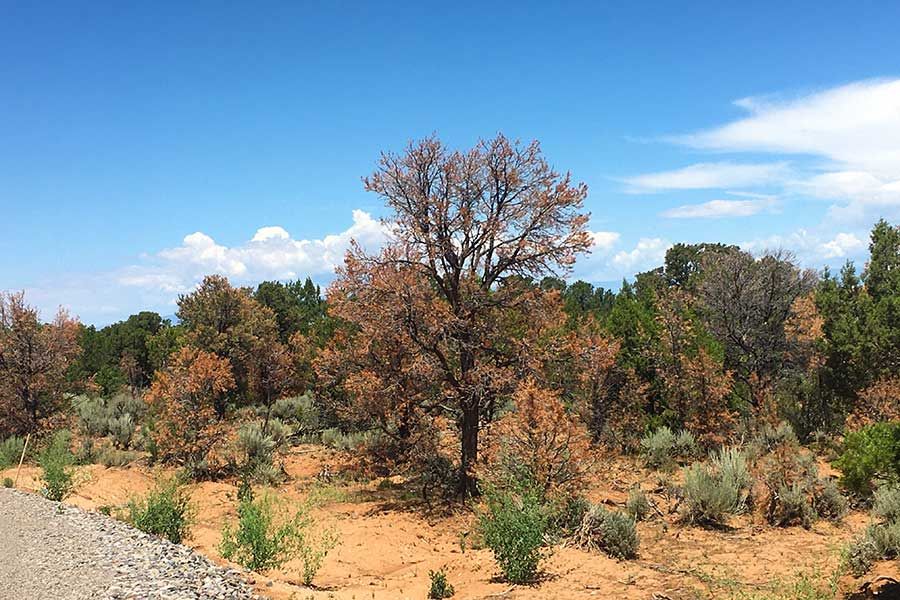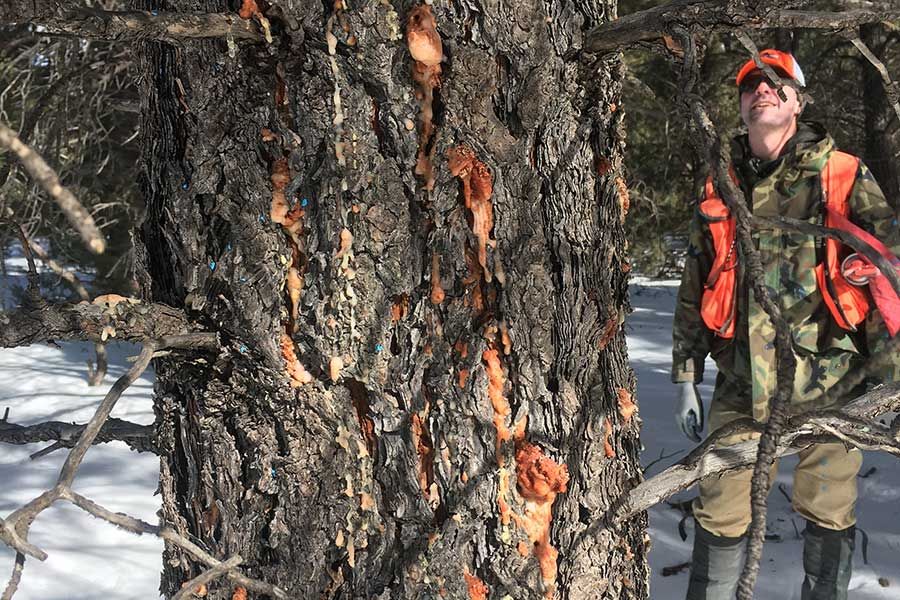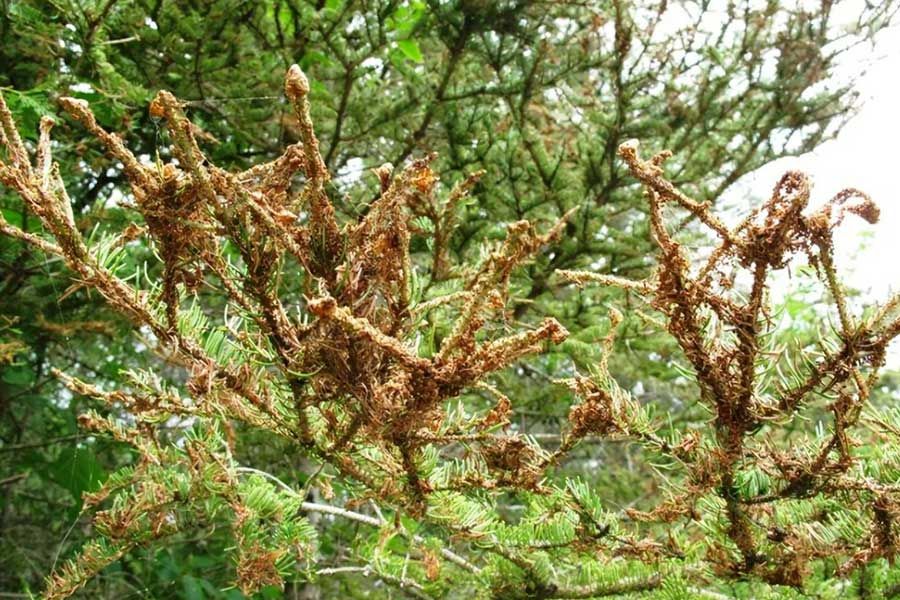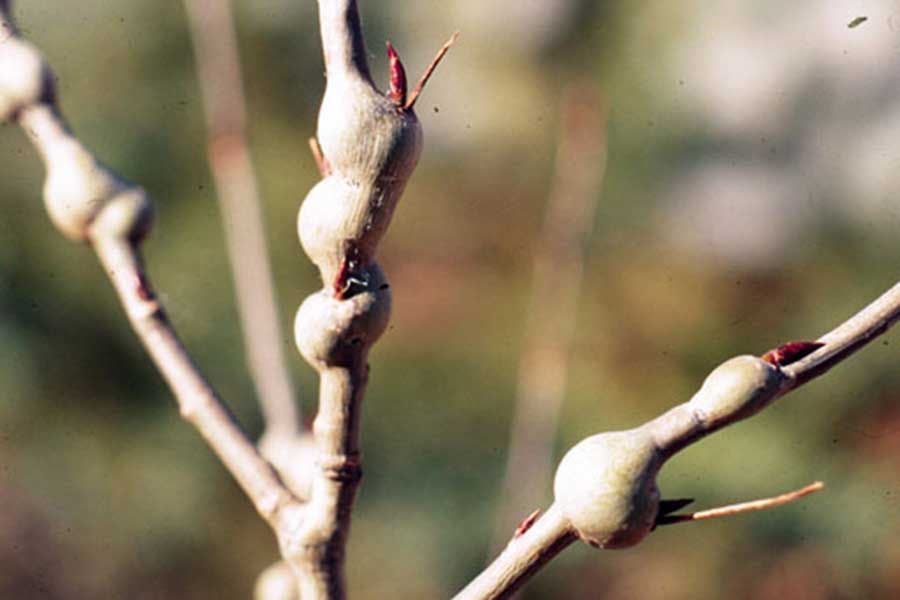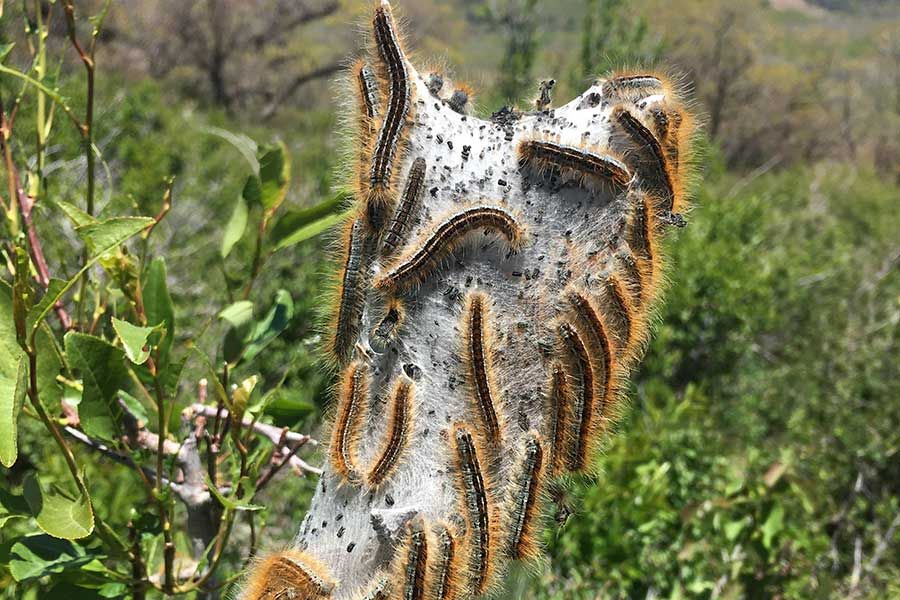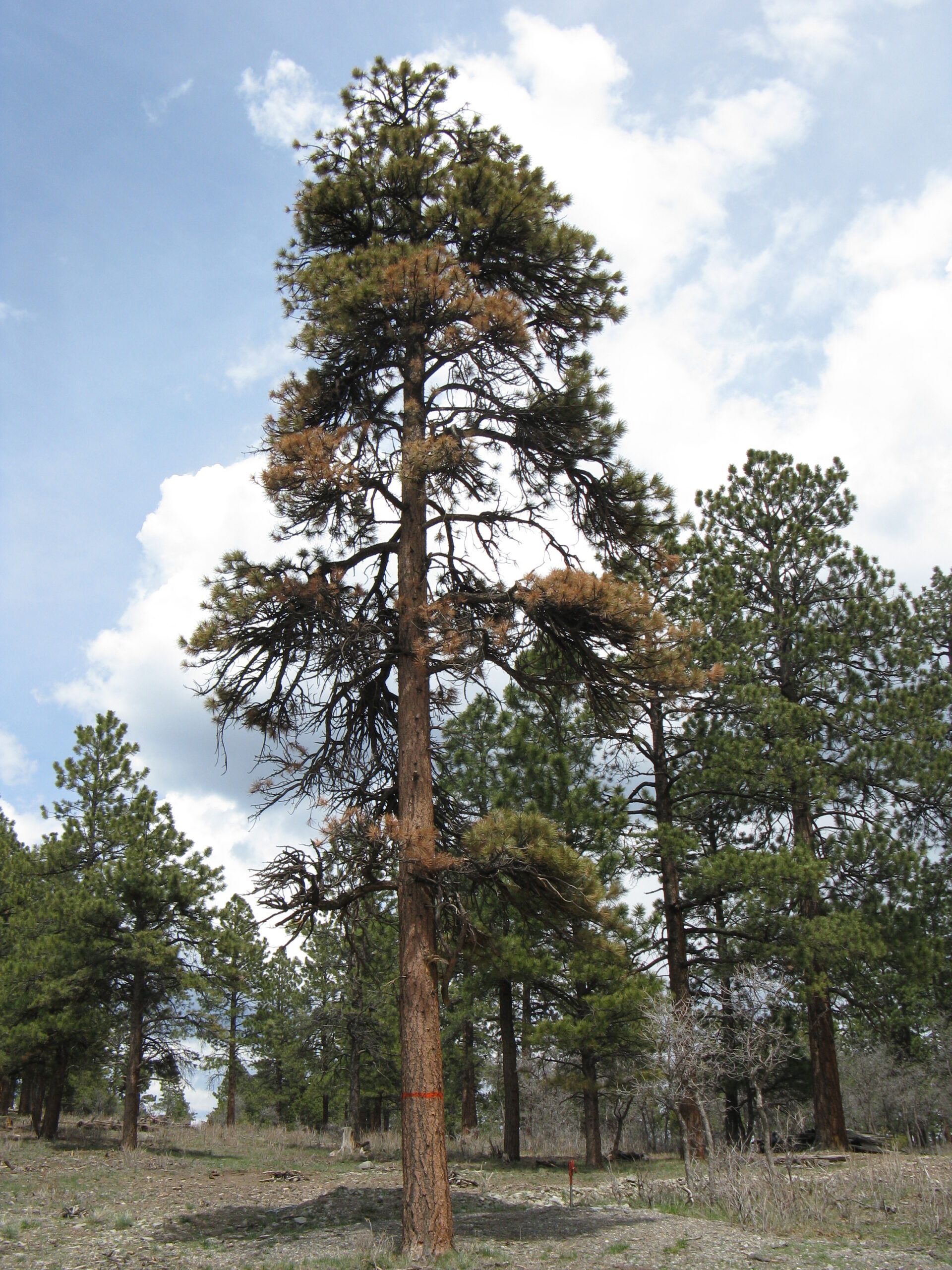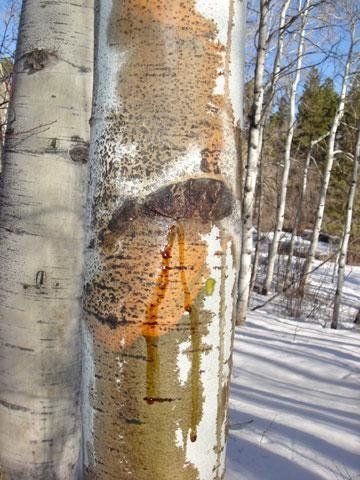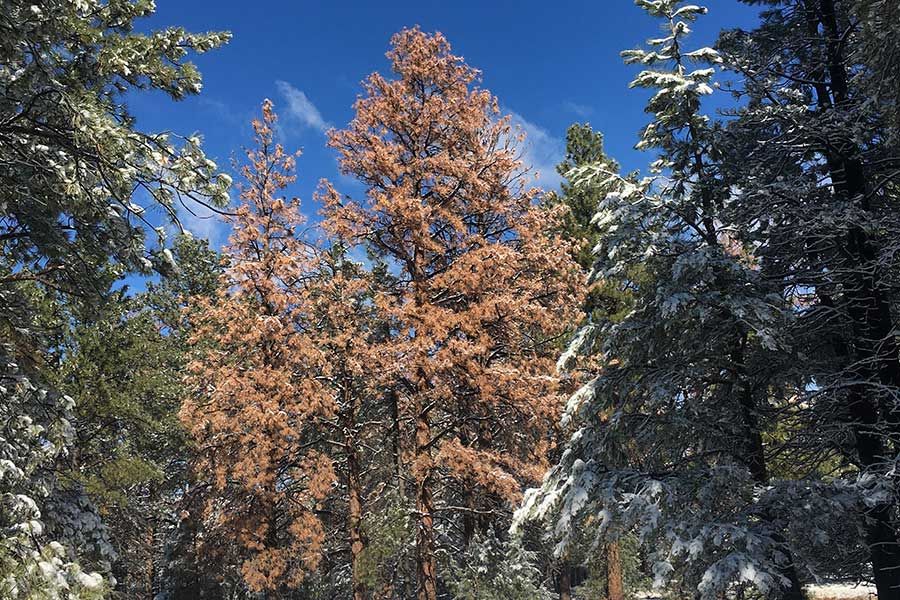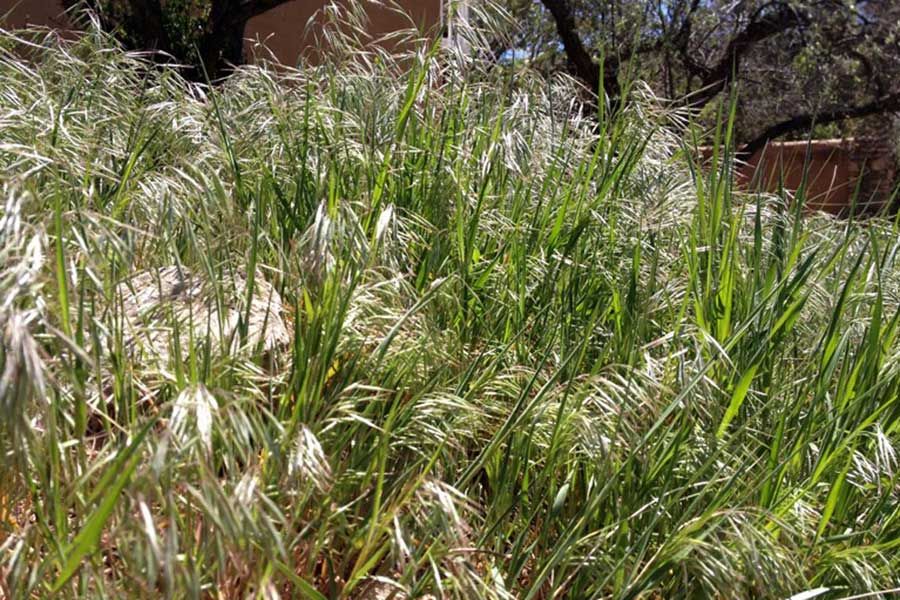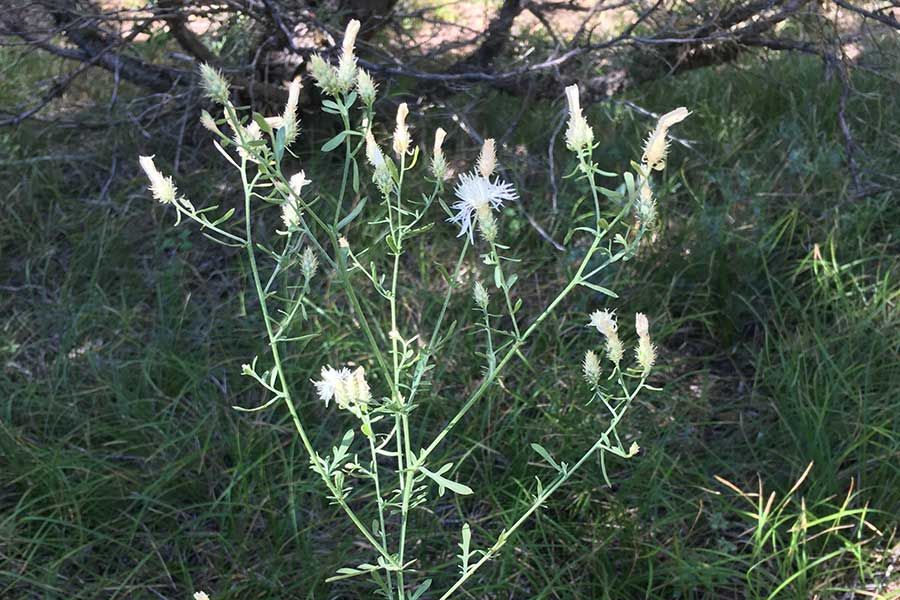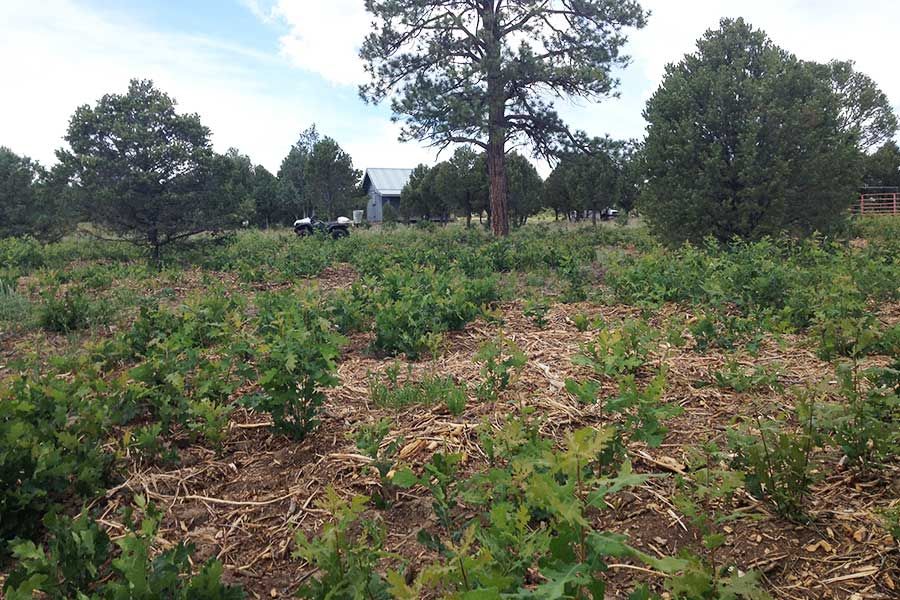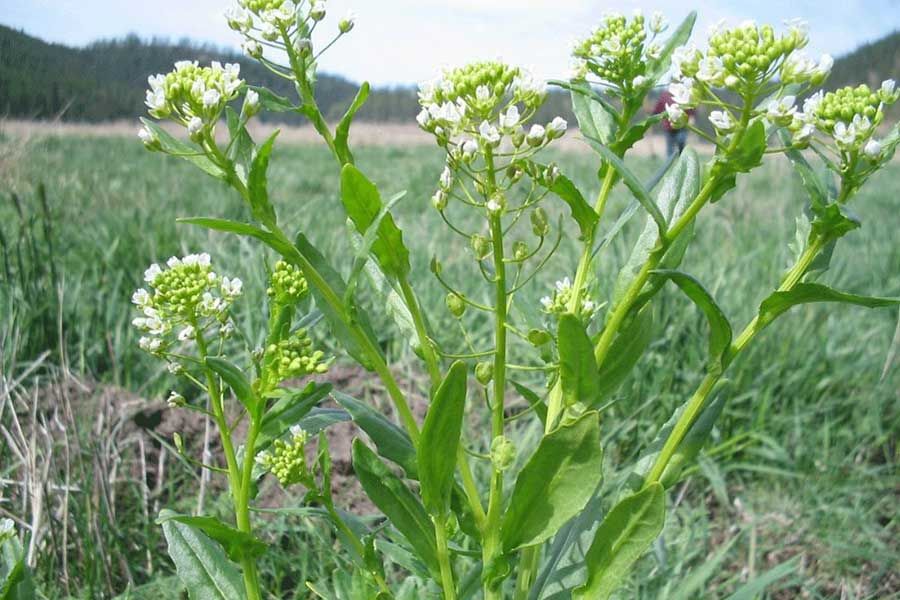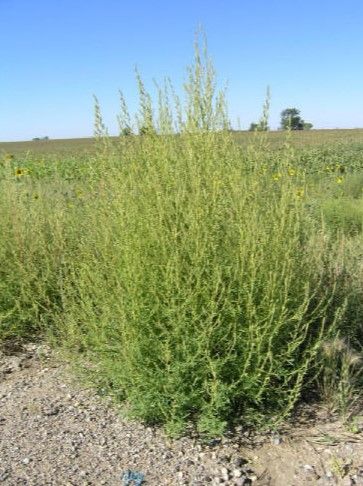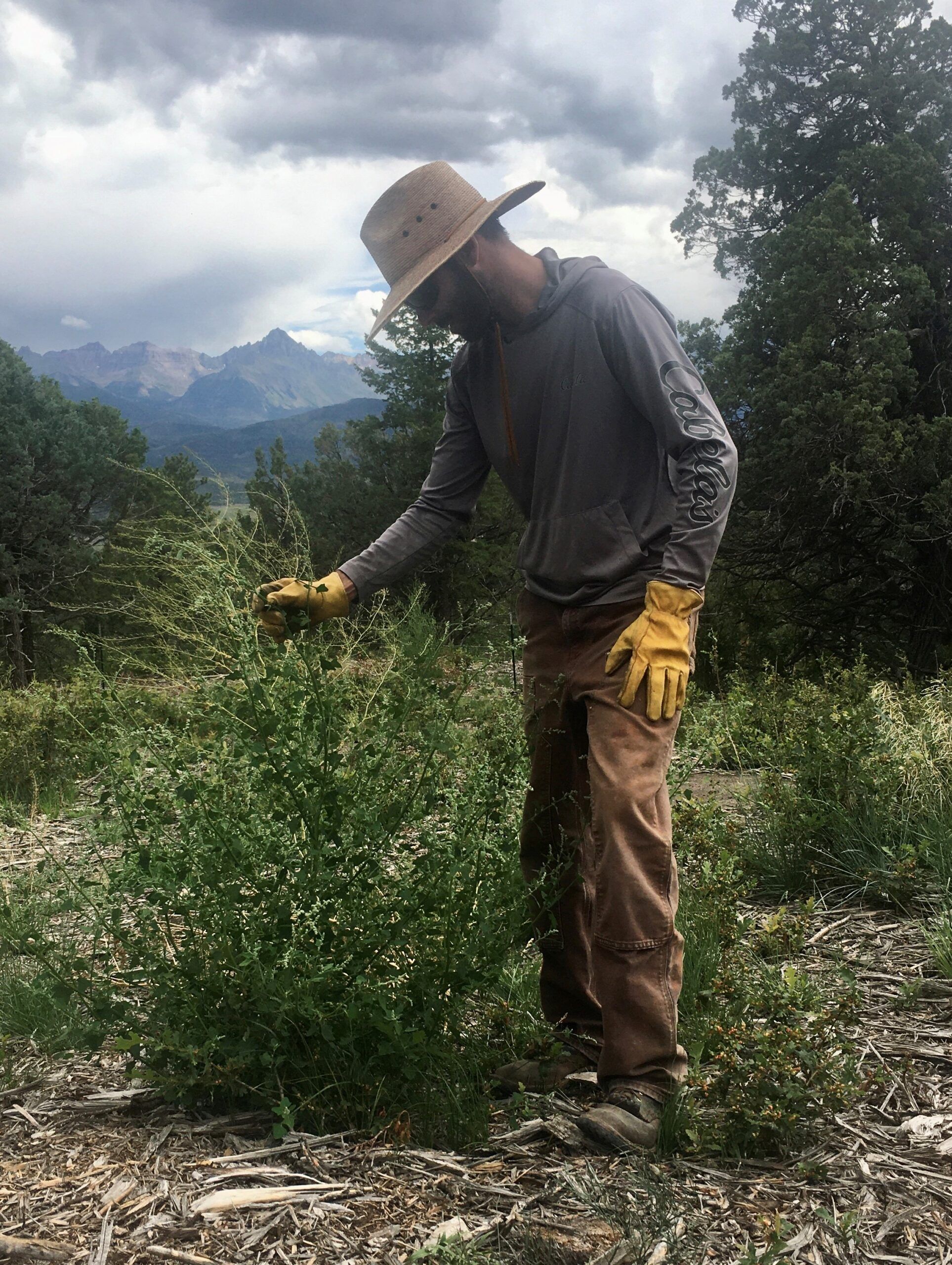Do you have dead or dying trees? Invasive or noxious weeds? Know what to do and take control of forest pests.
The principals of Integrated Pest and Weed Management use multiple strategies to control unwanted populations in a way that is economically and environmentally sound. These four principals include:
- Mechanical
- Cultural
- Chemical
- Biological
The list of pests that may be present in your forest include but are not limited to the lists below. Let SBF help you identify and manage the threats to your forestlands by promoting a happy and healthy forest.
COMMON FOREST PESTS:
- pinyon ips beetle
- mountain pine beetle
- Douglas fir beetle
- fir engraver beetle
- round headed pine beetle
- spruce beetle
- western spruce budworm
- dwarf mistletoe
- scale
- sawflies
- aphids
- Cooley spruce gall
- trunk rots and cankers
- leaf miners
- poplar/aspen twiggall
- western tent caterpillar
- needle miners
- poplar borer
COMMON NOXIOUS WEEDS AND OTHER SPECIES:
- cheatgrass
- thistles
- whitetop
- knapweed
- houndstongue
- goatgrass
- spurge
- mullein
- oxeye daisy
- Russian olive
- toadflax
- burdock
- field bindweed
- absinth wormwood
- halogeton
- puncturevine
- redstem filaree
- mustards
- kochia
- foxtail
- dandelion
- lambsquarter
- mallow
- Gambel oak
- redroot pigweed
Watch: Ouray’s Changing Forest Video
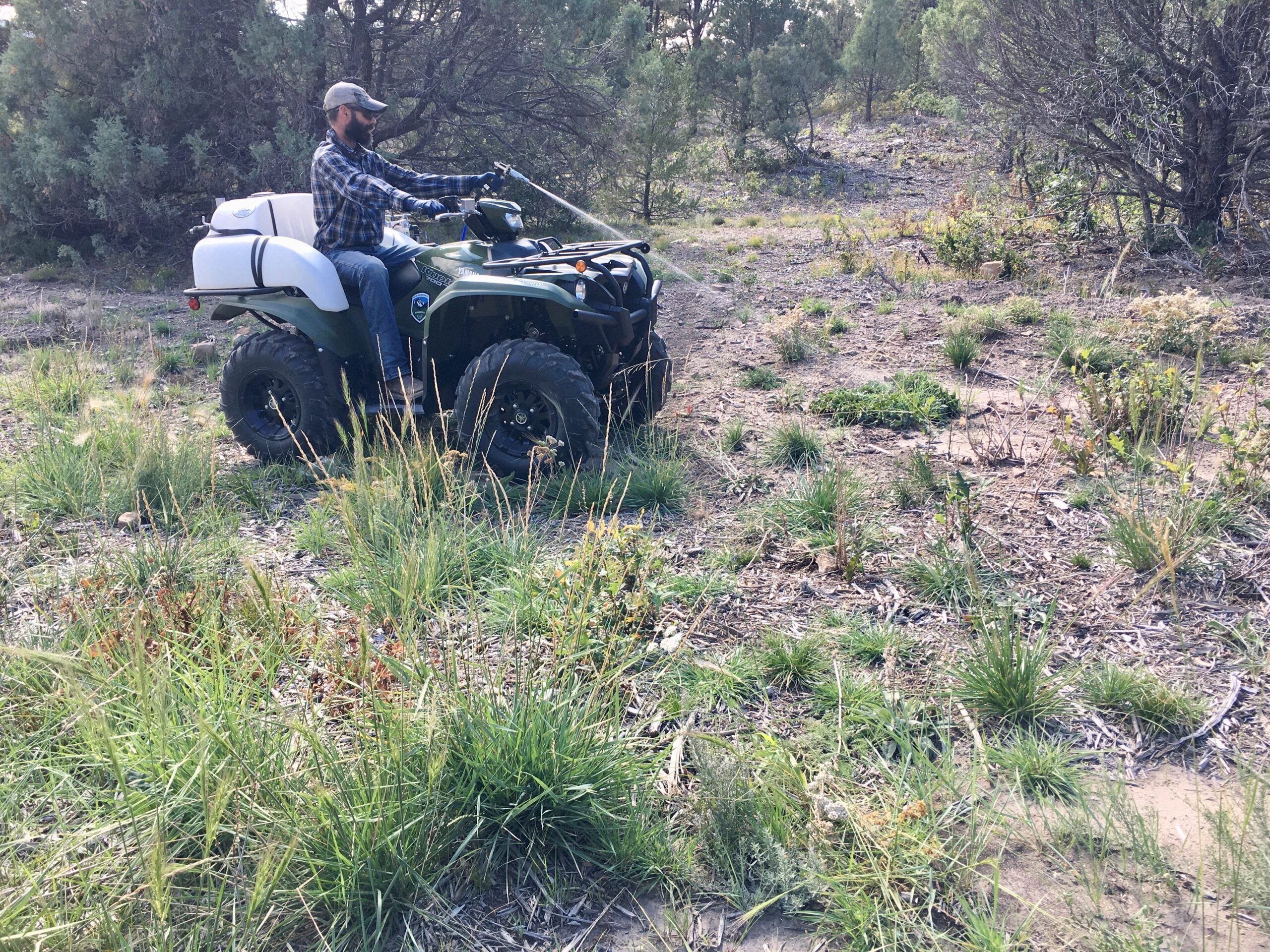
Integrated Pest Management Services
SBF Offers:
Insect & Disease Identification
Properly identifying the host tree is one of the first steps in determining which insect or disease could be damaging a tree. At SBF, we know our trees and can help you identify the host and pest as well as provide management recommendations accordingly.
Insect & Disease Survey
If you are seeing dead or dying trees on your property, SBF can assist in identifying the pest or disorder, determining the population level or severity, what life stage is the pest particularly vulnerable to control and the potential for management action or inaction. Knowing where endemic pest populations are active can lead to swift management action when populations reach epidemic levels.
General Sick Tree Consultation
Diagnosing tree disorders can be tricky! If you contact us for sick tree consultation we will likely ask questions like- what species is the host tree, are there signs of pests, what are the symptoms of the host tree damage, has the water or shade regime changed, has there been construction or compaction to the root zone, is the site conducive to waste water or mag chloride runoff, is there visible damage to the tree or was there a dramatic climatic event? If the issue is still in question, forward pictures of the host tree and possible pest to SBF for FREE consultation. If we are still stumped, no pun intended, we will visit your site for a nominal fee.
Beetle Pheromone/Semiochemical Consultation and Placement
Both aggregate and anti-aggregate beetle pheromone treatments have proven to be effective. Beetle pheromone placement should NOT replace active management through removal of the host trees when the pest is most vulnerable. If sanitation has occurred, we commonly use the anti-aggregate beetle pheromones MCH and Verbanone to control Douglas fir beetle and mountain pine beetle, respectively. SBF provides expert consultation on the use of semiochemicals as well as technical services involved in placement.
Gambel Oak & Other Woody Plant Control
Controlling Gambel oak on certain forest sites can be a challenge due to its aggressive growth. Once oak is set back mechanically, it can be further controlled by the application of herbicides.
Invasive & Noxious Plant Surveys
The first step in making a plan for invasive and noxious plants is to determine what species of weeds are present, where they are present, what types of weeds are present (annual, biennial, perennial), and what is the source of the infestation. From here, SBF can assist in further planning.
Broadcast Seeding
Quick establishment of native grasses can deter noxious and invasive weed establishment. SBF offers ATV broadcast seeding and spiked harrowing services.
Custom Seed Mix Development
SBF will develop custom seed mixes for our clients. Oftentimes our staff may need to visit the site to examine specific site characteristics like soils, native and non-native species and hardiness currently on site, elevation, aspect, water and shade regime, wildlife graze and browse usage, etc. We will work collectively with other experts in this field such as wildlife biologists and local seed vendors to further custom fit a mix specific to our client’s objectives.
Tree Spraying
Let SBF help you protect your trees from bark beetles and other insects and diseases. We can apply preventative sprays to reduce your risk of tree loss due to beetle mortality. Contact us in the winter for a consultation so that we can make applications prior to beetle flight.
Noxious Weed Spraying
SBF forester Austin Shelby is certified under the Colorado Department of Agriculture as Qualified Supervisor in Forest Pest Control, Range Pest Control as well as Agricultural Weed Control. We are qualified and happy to assist our clients with identifying and controlling noxious or invasive weeds through the use of herbicides, as well as other methods of Integrated Pest Management.
Spring Branch Forestry Services
Testimonial
“My property had dense vegetation and was very overgrown. It also had noxious weeds like Canada and Russian thistle. Austin visited my site and came up with a plan to thin our juniper, pinyon, oak and Douglas fir to a spacing that would slow fire spread. After the project he spread native grasses and flowers to compete with noxious weeds. After 2 years, the health of the forest has much improved. I see more deer elk and turkey. I have seen more deer fawns since the work was completed. Austin brings knowledge, experience and care for the environment. I have maintained contact with him for the latest forestry information.”
